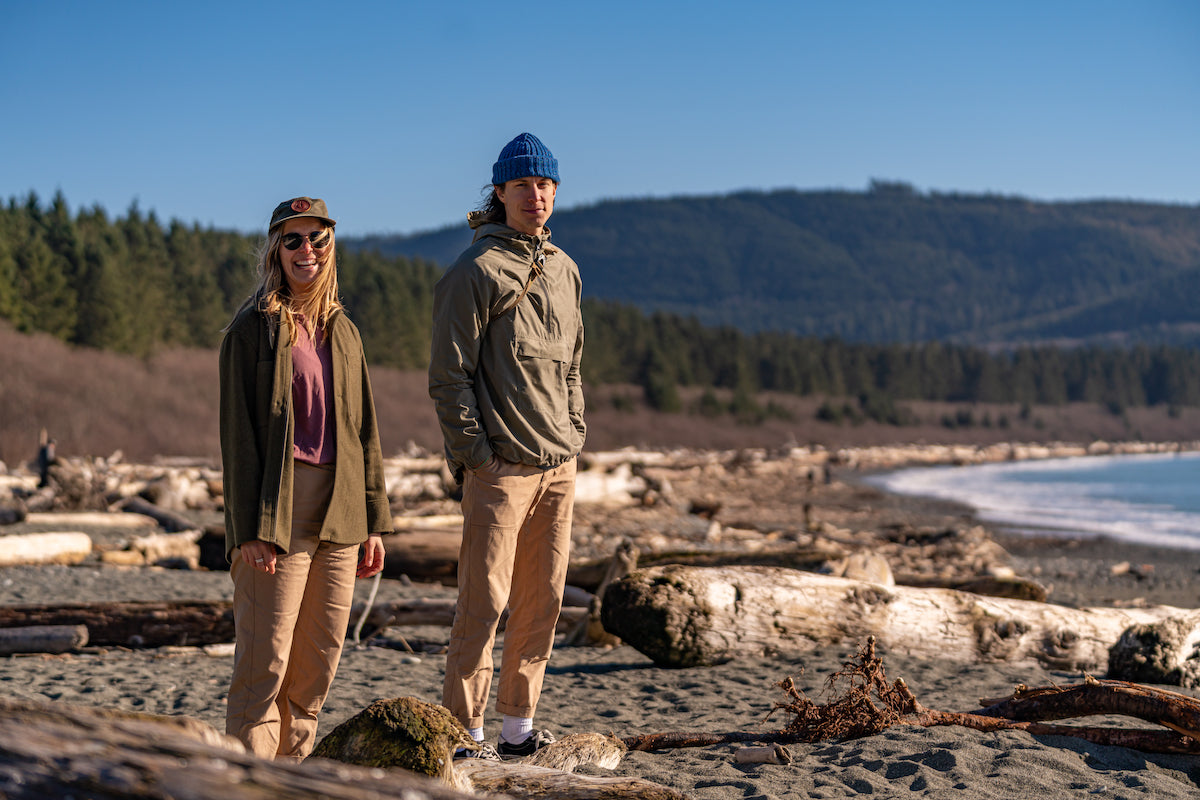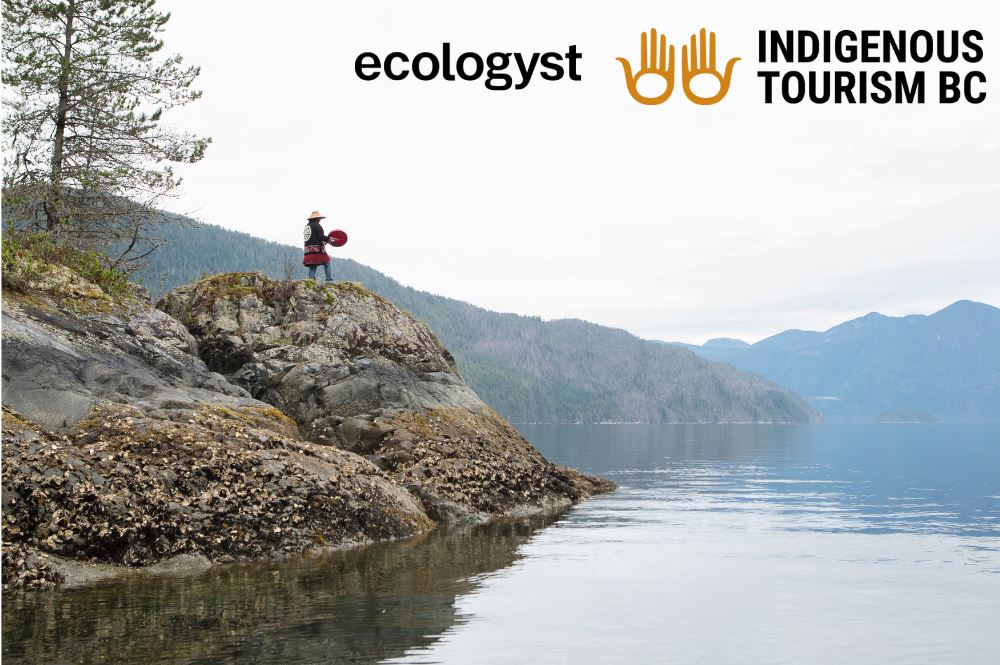Words from Lisa McAnulty
Photos by Momme Halbe on Pacheedaht Territory
Story unfolds in Lekwungen Territory
According to the UN landmark resolution
this year, access to a clean, healthy and
sustainable environment is a human right.
We are on a mission to support this declaration by challenging the antiquated practices of a 2.5 trillion dollar apparel industry — one that is responsible for nearly 10% of all global emissions. To put that into perspective, that’s more than the aviation, ocean, rail and landfill global emissions combined. We’ve learned a lot since the early days of operating as Sitka, and we’re excited to bring you along for the next phase of our journey. Every choice we make as a business has a collective and cumulative impact. Due to the scale of the industry, we understand that even the smallest changes can have a large influence.
From raw material to manufacturing, our previous business operations followed the traditional wholesale model with a global supply chain. We had offices in China and New Zealand, distribution centres located globally, and innumerable stores where products were sold. There were many blindspots in this way of producing and distributing clothing, and we intuitively knew this model no longer made sense. In order to understand the impact of conducting business this way, we invested in a carbon footprint assessment with local corporate sustainability firm, Synergy Enterprises. We can only manage what we measure, and in 2013 our first annual report was completed.
We learned that shipping and travelling to our global supply chain partners made up the largest portion of our emissions, so we committed to change the way we operate.

Quantifying the impact of our choices over time has proven to be a very helpful exercise. We were able to learn that we have reduced our overall carbon footprint in 2020 by nearly 4 times since 2013. To put the supply chain updates into perspective, we’ll zoom in to a fan-favourite style – The Wool Shirt.
When originally producing The Sitka Wool Shirt style, the material composition was a blend of 80% wool/20% nylon, finished with polyester buttons and then individually shipped in a polybag. This style could travel over 21,000 kilometers to get to a shop ready for purchase. Raw material came from New Zealand, milling and manufacturing was done in China, and distribution centres were located globally. The products would then ship from these distribution centres to
individual shops through our wholesale model.
we look forward to
the possibilities that
lie ahead.

In contrast, The ecologyst Heavyweight Wool Shirt supply chain now starts on a farm in California with certified climate beneficial wool coming from well-loved sheep. The fibers are sent to American Woolen Mills (the oldest woolen mill in North America, and just one of three remaining) located in Connecticut where the fabric is milled. Once the fabric is ready, it’s sent to our factory in Victoria where our talented factory team makes the product in an open concept space where anyone can come in to see the process of garments being made. Polyester buttons are replaced with a nut-based material called corozo. The distance travelled for this minimal, North American supply chain is 9,500 km, including sending the finished garments to our two store locations (one in Whistler, and one in Victoria).
Outside the necessary production steps, many wholesale practices were completely eliminated such as trade shows, sales events, sampling to merchandisers and buyers, global distribution centres, and oil extraction/processing/polymerization/transportation, all positively contributing to our reduced emissions. The work that lies ahead of us is to continue to shed light on every aspect of our development and manufacturing processes. We will be gathering data and insights to move toward achieving the Sustainable Development Goals 2030 proposed by the United Nations. Currently underway, we are measuring on a per-product basis the full lifecycle and impact of a product being developed from raw material to its natural end of use. The metrics include greenhouse gas emissions, water usage, energy consumption, eutrophication, chemical output and plastic avoided, to name a few. Our intention is to peel back each layer and provide observations to our community in order to make the best possible personal decisions based on their goals. We will continue to make the hard decisions so you don’t have to. In addition to benchmarking against the
industry, we will be looking into innovative solutions in relation to product life extension, continuing our supply chain [r]evolution, exploring regenerative materials, and working to redefine waste in the textile industry.



